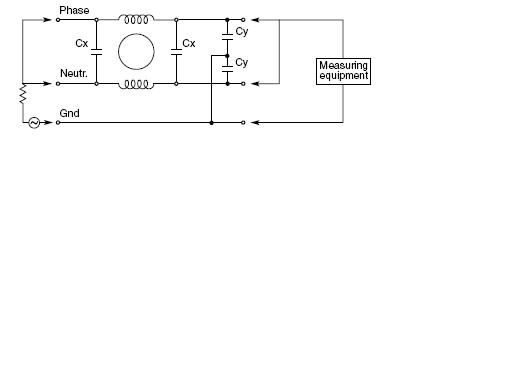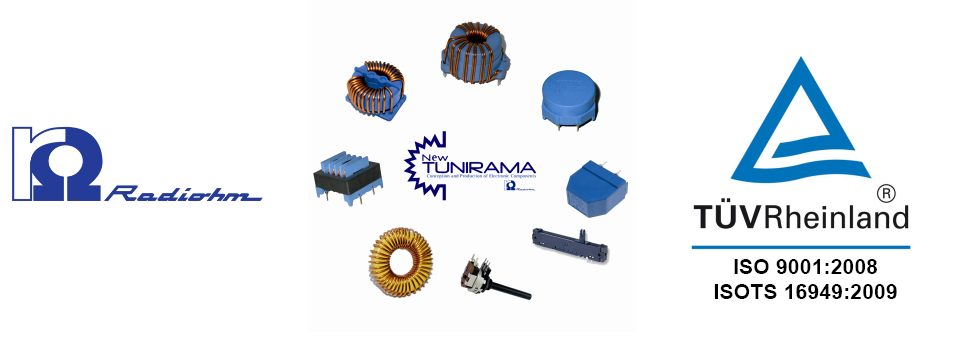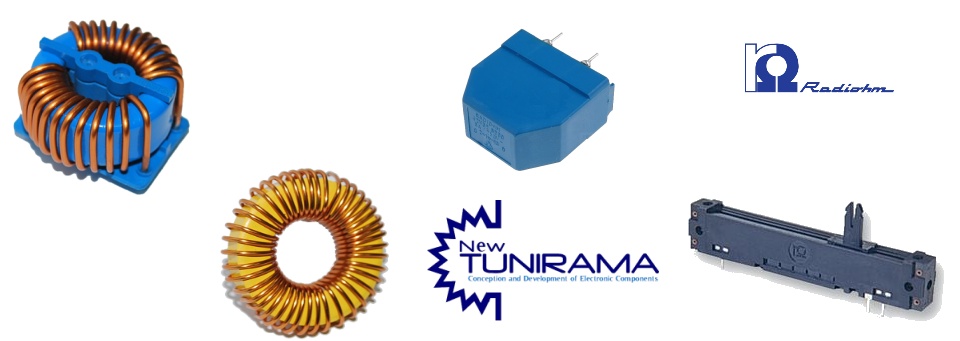Les types de Self "Current--compensated Noise Suppression Chokes"
A distinct category of filters, especially designed to supress the “common mode” or asymmetrical interferences, which appear between both the power line cords and the ground, is realized with the so called “current-compensated” chokes.
These chokes are fitted with a ferrite core and a special winding arrangement, made of two symmetrical windings where the same current flows in such a way as to produce two identical but opposite magnetic flux, so ensuring that the high permeability core is not saturated.
Of course, to reduce practically to zero the resultant flux, the two windings must be electrically identical and the stray inductance much lower than the nominal windings inductance, which is easily obtained with the toroidal cores.
Under these conditions, the filtering effect takes place because the currents due to the asymmetrical disturbances flow along the two windings in such a way that the corresponding flux are added, thus allowing the full winding inductance to appear.
While the filter is very effective against the asymmetrical interferences, it shows a very low effect against the symmetrical interferences, as they produce a current compensation in the windings, and this causes the choke inductance to disappear.
Of course, a current-compensated filter provides a double attenuation, i e it not only prevents the interferences internally generated in the equipment from disturbing the other equipment, but it also protects sensitive circuitsinside the equipment like microprocessors or logical equipment from the external interferences.
The current-compensated chokes are normally used in power supply filtering in combination with capacitors; in the diagram a typical filter is shown with the CY capacitors, which strongly improve the asymmetrical interferences suppression, and the CX capacitors which are effective against the symmetrical interferences.
In practice, these filters can be used on a frequency range from a few kHz to a few MHz; their interferences attenuation is in principle proportional to the inductance value and to the frequency, but it also depends on the Cy capacitors and on the stray capacitance, which unfortunately limits the useful filtering band.
The current-compensated choke actually shows in its lower frequency range an increasing attenuation with frequency, then a generally rounded maximum which corresponds to the resonance frequency, and finally a decreasing attenuation with frequency.
The higher useful filtering frequency does not generally exceed the resonance frequency, which depends on the inductance value as well as the stray capacitance; this in turn can vary according to the coil size, the coil design and winding method, but this occurrence cannot be eliminated in principle.






